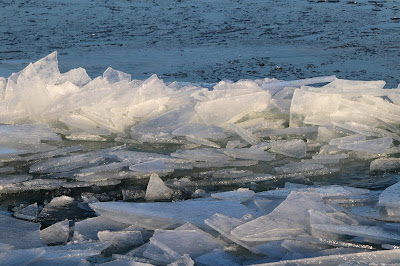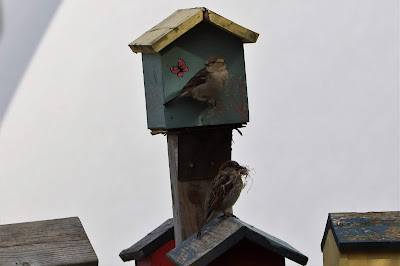Beaver in the Winter!
During my lunch walk today, I encountered a rather odd, wide trail. Because I had been finding recent, nearby beaver activity, I started thinking that a beaver was touring through the snow.
Upon closer inspection, I decided that the tracks were probably made by a muskrat. The path was a well-used runway by something.
I followed the tracks and could see where the animal(s) had entered the water by digging under some tree roots.
Many trees have been felled this winter by the local beaver population. Since the water has rarely frozen, the rodents have had easy access to land from their lodge. Beavers don't hibernate. They stay active in their lodges and under water when ponds and lakes are frozen.
Sometimes they tackle trees with a little too much gusto!
I realize that not many people would take a photo of beaver scat, but I was intrigued by the amount of wood fibre that was left behind. They eat cellulose found in leaves, roots and bark.
It reminded me of an encounter in 2008 when I found a wide track packed into the snow. While my brain was processing the possibilities, I followed the trail.
When I caught up with the wet, snow covered beaver, I felt like I had found the pot of gold at the end of the rainbow!! His wide tail, when dragged, had covered up the foot tracks.
- Very warm, waterproof fur.
- Hind feet are webbed for swimming,
- Nostrils will close when underwater.
- Transparent third eyelid to protect their eyes.
- Tails help regulate heat and can store fat for winter.





















































